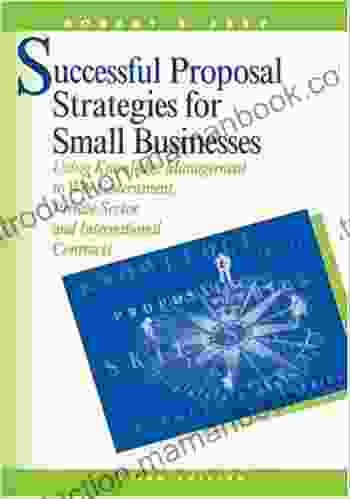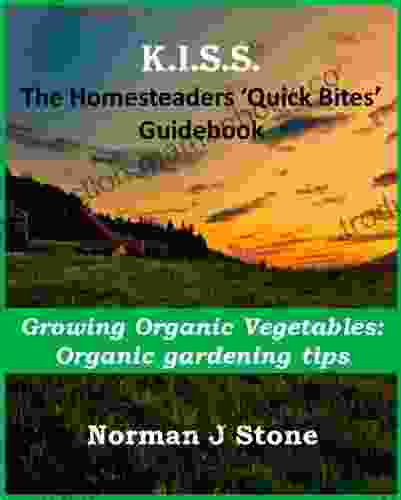The Homesteaders' Quick Bites Guidebook: Growing Organic Vegetables for Beginners

Growing your own organic vegetables is a rewarding and sustainable way to provide fresh, healthy food for your family. It's also a great way to connect with nature and learn about where your food comes from. This guidebook will provide you with everything you need to know to get started, from choosing the right varieties to harvesting and storing your crops.
4.1 out of 5
| Language | : | English |
| File size | : | 644 KB |
| Text-to-Speech | : | Enabled |
| Screen Reader | : | Supported |
| Enhanced typesetting | : | Enabled |
| Print length | : | 15 pages |
| Lending | : | Enabled |
Choosing the Right Varieties
When choosing vegetable varieties, it's important to consider the climate in your area, the amount of space you have, and the level of care you're willing to give. Some vegetables are more tolerant of heat or cold than others, and some require more water or fertilizer. It's also important to choose varieties that are resistant to pests and diseases.
If you're a beginner, it's a good idea to start with easy-to-grow vegetables such as tomatoes, cucumbers, and zucchini. These vegetables are relatively low-maintenance and can be grown in a variety of climates.
Preparing the Soil
The soil is the foundation of your garden, so it's important to prepare it properly before planting. The ideal soil for vegetable gardening is loose, well-drained, and rich in organic matter. If your soil is not ideal, you can improve it by adding compost or manure. You can also test your soil to determine its pH level and nutrient content. This will help you to choose the right fertilizers and amendments for your garden.
Planting
When planting your vegetables, it's important to space them correctly. The spacing will vary depending on the variety of vegetable. You can find the spacing information on the seed packet or plant tag. It's also important to plant your vegetables at the right depth. If you plant them too shallow, they may not get enough water and nutrients. If you plant them too deep, they may not germinate or may rot.
Watering
Vegetables need regular watering, especially during hot and dry weather. The amount of water you need to give your plants will vary depending on the type of vegetable, the soil conditions, and the weather. It's best to water your plants deeply and infrequently, rather than lightly and often. This will help to encourage deep root growth and prevent the soil from becoming waterlogged.
Fertilizing
Vegetables need fertilizer to grow and produce fruit. You can fertilize your plants with compost, manure, or commercial fertilizer. If you're using commercial fertilizer, be sure to follow the instructions on the package. It's important to avoid over-fertilizing, as this can damage your plants.
Pest and Disease Control
Pests and diseases are a common problem for vegetable gardeners. There are a number of organic methods you can use to control pests and diseases, such as using companion planting, neem oil, and beneficial insects. It's important to identify the pest or disease properly before you take action. This will help you to choose the most effective control method.
Harvesting
Harvesting your vegetables is one of the most rewarding parts of gardening. When harvesting, it's important to use clean tools and to handle the vegetables carefully. The harvest time will vary depending on the variety of vegetable. You can find the harvest time information on the seed packet or plant tag.
Storing
Once you've harvested your vegetables, it's important to store them properly to keep them fresh. The storage method will vary depending on the type of vegetable. Some vegetables, such as tomatoes and cucumbers, can be stored at room temperature. Others, such as potatoes and onions, need to be stored in a cool, dark place.
Growing organic vegetables is a rewarding and sustainable way to provide fresh, healthy food for your family. By following the tips in this guidebook, you can get started on your own vegetable garden and enjoy the benefits of homegrown produce.
4.1 out of 5
| Language | : | English |
| File size | : | 644 KB |
| Text-to-Speech | : | Enabled |
| Screen Reader | : | Supported |
| Enhanced typesetting | : | Enabled |
| Print length | : | 15 pages |
| Lending | : | Enabled |
Do you want to contribute by writing guest posts on this blog?
Please contact us and send us a resume of previous articles that you have written.
 Top Book
Top Book Novel
Novel Fiction
Fiction Nonfiction
Nonfiction Literature
Literature Paperback
Paperback Hardcover
Hardcover E-book
E-book Audiobook
Audiobook Bestseller
Bestseller Classic
Classic Mystery
Mystery Thriller
Thriller Romance
Romance Fantasy
Fantasy Science Fiction
Science Fiction Biography
Biography Memoir
Memoir Autobiography
Autobiography Poetry
Poetry Drama
Drama Historical Fiction
Historical Fiction Self-help
Self-help Young Adult
Young Adult Childrens Books
Childrens Books Graphic Novel
Graphic Novel Anthology
Anthology Series
Series Encyclopedia
Encyclopedia Reference
Reference Guidebook
Guidebook Textbook
Textbook Workbook
Workbook Journal
Journal Diary
Diary Manuscript
Manuscript Folio
Folio Pulp Fiction
Pulp Fiction Short Stories
Short Stories Fairy Tales
Fairy Tales Fables
Fables Mythology
Mythology Philosophy
Philosophy Religion
Religion Spirituality
Spirituality Essays
Essays Critique
Critique Commentary
Commentary Glossary
Glossary Bibliography
Bibliography Index
Index Table of Contents
Table of Contents Preface
Preface Introduction
Introduction Foreword
Foreword Afterword
Afterword Appendices
Appendices Annotations
Annotations Footnotes
Footnotes Epilogue
Epilogue Prologue
Prologue Connie Suttle
Connie Suttle Craig Duncan
Craig Duncan Maggie Weldon
Maggie Weldon Thomas Dekker
Thomas Dekker Kerry Kimber
Kerry Kimber A J Jacobs
A J Jacobs Lane Hart
Lane Hart Hugh Howey
Hugh Howey Minqi Li
Minqi Li Jack Arbor
Jack Arbor Peter Handke
Peter Handke J M Beach
J M Beach Randi Alexander
Randi Alexander Charles H Ferguson
Charles H Ferguson Daniele D Alvia
Daniele D Alvia A L Hawke
A L Hawke Karthik C
Karthik C Lee Young
Lee Young The Ravens Quoth Press
The Ravens Quoth Press Zack Hawk
Zack Hawk
Light bulbAdvertise smarter! Our strategic ad space ensures maximum exposure. Reserve your spot today!

 Anthony WellsDive into the Enchanted Realm of Three Pearls Transactional Analysis Fairy...
Anthony WellsDive into the Enchanted Realm of Three Pearls Transactional Analysis Fairy...
 Reginald CoxAmigurumi Pattern For Bee, Ladybug, And Flowers: Easy Crochet Doll Patterns...
Reginald CoxAmigurumi Pattern For Bee, Ladybug, And Flowers: Easy Crochet Doll Patterns...
 Eddie PowellUsing Knowledge Management To Win Government Private Sector And International
Eddie PowellUsing Knowledge Management To Win Government Private Sector And International Eugene PowellFollow ·19k
Eugene PowellFollow ·19k Isaias BlairFollow ·2.3k
Isaias BlairFollow ·2.3k George MartinFollow ·6.3k
George MartinFollow ·6.3k Miguel de CervantesFollow ·10k
Miguel de CervantesFollow ·10k Charles ReedFollow ·19.5k
Charles ReedFollow ·19.5k Johnny TurnerFollow ·12.9k
Johnny TurnerFollow ·12.9k Brian BellFollow ·2.1k
Brian BellFollow ·2.1k Denzel HayesFollow ·14.3k
Denzel HayesFollow ·14.3k

 Floyd Powell
Floyd PowellTutoring the Player Campus Wallflowers: A Comprehensive...
College campuses are...

 Chuck Mitchell
Chuck MitchellThe Beginner's Guide to Building, Repairing, Raising, and...
Credit is a...

 Deacon Bell
Deacon BellDelve into the Dangerous World of Motorrad Clubs with the...
Prepare yourself...

 Adrien Blair
Adrien BlairDiscover the Enchanting Allure of Living in the...
The Appalachian Forest, a verdant tapestry of...
4.1 out of 5
| Language | : | English |
| File size | : | 644 KB |
| Text-to-Speech | : | Enabled |
| Screen Reader | : | Supported |
| Enhanced typesetting | : | Enabled |
| Print length | : | 15 pages |
| Lending | : | Enabled |








